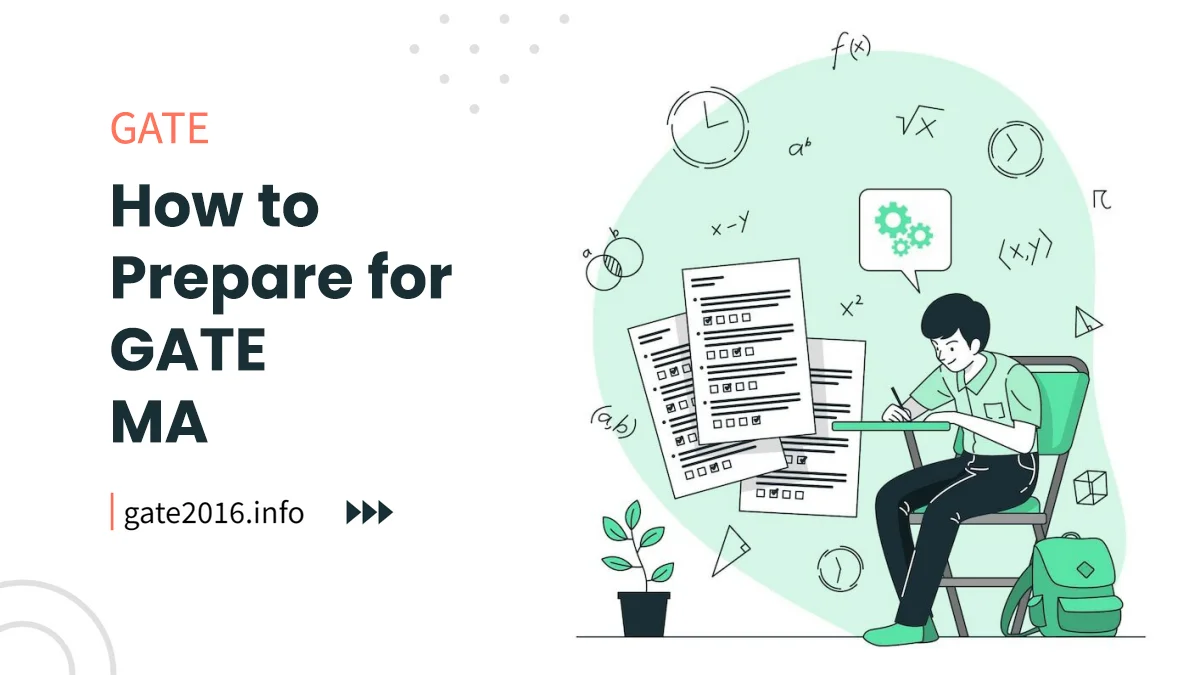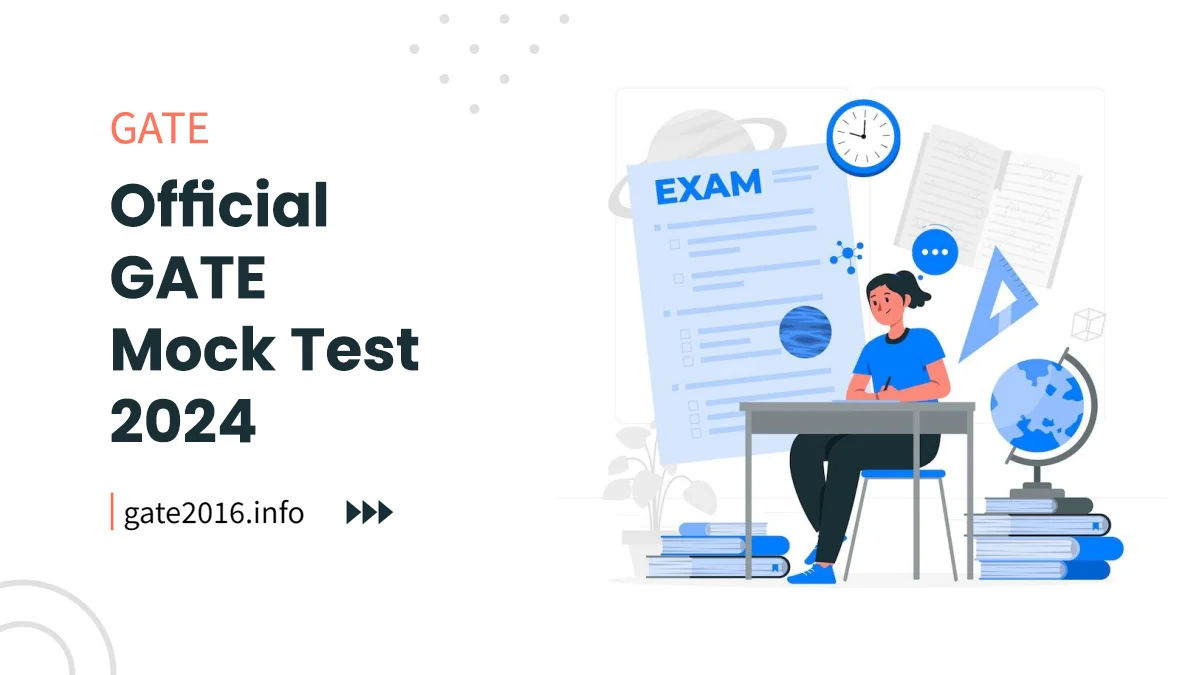Advertisements
Ratings
GATE NM Syllabus 2024– GATE 2025 exam will be conduct by IIT, Roorkee on dates 1, 2 and 8, 9 February, 2025. Here we have provided latest Naval Architecture and Marine Engineering syllabus & paper pattern for GATE 2024 aspirants.
All candidates with Naval Architecture and Marine Engineering subject are advised to download this latest syllabus before starting their GATE 2024 exam preparation.
Contents
- GATE 2025 Highlights
- GATE Naval Architecture & Marine Engineering Paper Pattern 2024
- GATE Naval Architecture and Marine Engineering Exam Pattern Details 2024
- GATE Naval Architecture & Marine Engineering Syllabus 2024 PDF
- GATE Naval Architecture and Marine Engineering Syllabus for General Aptitude 2024
- GATE Naval Architecture and Marine Engineering Syllabus for Core Subjects 2024
- GATE Naval Architecture and Marine Engineering Weightage
- GATE Naval Architecture & Marine Engineering Guidance
- GATE Naval Architecture & Marine Engineering Syllabus & Exam Pattern FAQs
- Related Links
- GATE Total Information & Guidance
GATE 2025 Highlights
| GATE 2025 Conducting Body | IIT, Roorkee |
| GATE 2025 Exam Date | 1, 2, 8, 9 February, 2025 |
| GATE 2025 Total Subjects | 30 |
| GATE 2025 Exam Mode | ONLINE Computer Based Test (CBT) |
| GATE 2025 Exam Duration | 3 hours (180 minutes) |
| GATE 2025 Total Questions | 10 (GA) + 55 (subject)= 65 |
| GATE 2025 Total Marks | 100 |
| GATE 2025 Question Type | MCQ, MSQ, NAT |
| Paper Sections | Marks Distribution |
|---|---|
| Subject Questions | 72% of the total marks. |
| Engineering Mathemetics | 13% of the total marks. |
| General Aptitude | 15% of the total marks. |
| GATE NM Paper Sections | Distribution of Marks | Total Marks | Types of Questions |
| General Aptitude | 5 questions of 1 mark each (5×1=5) 5 questions of 2 marks each (5×2= 10) | 15 marks | MCQs |
| GATE Naval Architecture and Marine Engineering Core Syllabus | Varies | 85 marks | MCQs, MSQs, NATs |
| Negative Marking | For a 1-mark MCQ, 1/3 of the mark will be deducted for an incorrect answer.
For a 2-marks MCQ, 2/3 of the mark will be deducted for an incorrect answer.
No negative marking is allowed for multiple-select and numerical-type questions. | ||
| General Aptitude Syllabus (Common to all papers) [pdf] | Download |
| GATE Syllabus for Naval Architecture and Marine Engineering (NM) [pdf] | Download |
| Topics | Subtopics |
| Verbal Aptitude | English grammar, vocabulary, Reading and comprehension, Narrative sequencing |
| Quantitative Aptitude | Data interpretation: 2 & 3-dimensional plots Maps and tables Numerical computation and estimation (including ratios, percentages, powers, exponents and logarithms) Permutations and combinations Mensuration and geometry Elementary statistics and probability |
| Analytical Aptitude | Logic: Deduction and induction Analogy Numerical relations and Reasoning |
| Spatial Aptitude | Transformation of shapes like translation, mirroring, rotation and scaling Assembling and grouping Paper folding, cutting, and patterns (2 and 3 dimensions) |
| Section 1: Engineering Mathematics | |
| |
| Section 2: Applied Mechanics and Structures | |
| Engineering Mechanics | Free-body diagrams and equilibrium; trusses and frames; virtual work; kinematics and dynamics of particles and rigid bodies in plane motion; impulse and momentum (linear and angular); and energy formulations |
| Vibrations | Free and forced vibration of damped and undamped systems, single and multi DOF systems |
| Mechanics of Materials | Stress and strain, elastic constants, Poisson’s ratio; Mohr’s circle for plane stress and plane strain; shear force and bending moment diagrams; bending and shear stresses; torsion; Euler’s theory of columns; energy methods; theories and Failure; material testing methods |
| Machine Design | Design for static and dynamic loading; Design of machine elements such as shafts, gears, and rolling and sliding contact bearings; Joining techniques such as bolting, riveting and welding |
| Section 3: Fluid Mechanics and Marine Hydrodynamics | |
| Fluid Mechanics | Fluid properties; fluid statics, stability of floating bodies; Conservation laws: Mass, momentum and energy (Integral and differential form); Dimensional analysis and dynamic similarity; sources, sinks, doublets, line vortex, and their superposition; Stoke’s integral theorem. Generalized Bernoulli’s equation, sources, sinks, dipole, Flow with circulation, potential flow with rotational symmetry, hydrodynamical lift, Kutta-Joukowski theorem. Vortex motion- Fundamental concepts, vortex analogy to Biot-Savart’s law, straight parallel vortex filaments, vortex sheets. Viscous flow – Navier-Stokes equations, Couette flow, Plane poiseuille flow. Equation of continuity, Euler‘s equation, Bernoulli‘s equation, Viscous flow of incompressible fluids, elementary turbulent flow, boundary layer, flow through pipes. |
| Hydrodynamics | Vorticity and Kelvin’s theorem, potential flow theory, sources, sinks, and doublets, hydrodynamic forces in potential flow, D’Alembert’s paradox, added mass, slender body theory, hydrodynamic model testing, scaling laws, and application of potential theory to surface waves, energy transport, wave/body forces, and linearized theory of lifting surfaces |
| Boundary layer theory | Prandtl’s boundary layer equations, criterion for separation, Blasius solution, Skin friction, displacement thickness, momentum thickness, Turbulent boundary layer, Boundary layer control. Airfoils- Lift, drag, circulation, pressure distribution -theory of thin aerofoils, wings of infinite and finite span, circulation distribution, Cavitation |
| Section 4: Naval Architecture and Ocean Engineering | |
| Ship Geometry and Physical Fundamentals | Archimedes’ principle, buoyancy, and weight of ship, laws of flotation, heel and trim, stable and unstable equilibrium of ships, importance of streamlined hull shape, ship main particulars, hydrostatic calculations |
| Stability and Trim of Ships | Statical stability at small angles of heel, inclining experiment, shift of centre of gravity due to mass changes, transverse movement of mass and effect, free surface effect, effect of suspended mass, stability at large angles of heel, angle of loll, curves of statical stability, dynamical stability, damage stability, characteristic curves of dynamic stability, floodable length calculations and curves, loss of stability due to grounding, docking stability |
| Resistance and Propulsion | Components of ship resistance, form factor, hull roughness, and resistance prediction methods, tank wall effects, determination of ship resistance from different test results, resistance of advanced vehicles, appendage and added resistance, propeller geometry and theories, hull-propeller interactions, propulsive efficiency definitions, propeller cavitation and effects, propeller design and series, open water and self-propulsion model tests, different types of propellers and their principles, propeller material, strength, and manufacturing, unconventional propellers |
| Ship Manoeuvring and Motions | Ship path keeping and changing, equations of motion, linearized equations and control fixed stability indexes, model tests for stability and control, rudder hydrodynamics, design, and operation, influence of propeller, hull, and appendages on rudder performance, experimental methods for hydrodynamic derivatives determination, ocean wave types and characteristics, ship motions, equations of motion, dynamic effects of ship motion in seaway, ship motion stabilisers and methods for determining ship motions, seakeeping features of high-performance marine vehicles |
| Ship Structures and Strength | Shipbuilding materials and joining techniques, ship structural and framing systems, bottom, side, deck, bulkhead, end structures and connections, primary and secondary structural members, superstructure, hatch covers, machinery foundations, cargo handling systems and support structures, loads acting on ships in seaway, longitudinal and transverse strength considerations and estimation methods, strength of hull girder, stiffened plate analysis, torsion of hull girder, deformation and stresses, local strength analysis, reliability analysis and ultimate strength of hull girder, structural vibrations, fatigue, and fracture |
| Physical Oceanography | Physical properties of seawater, ocean waves – tides and wind waves), offshore structures: fixed and floating platforms, mooring and station keeping, port and harbour engineering: port structures, dredging, navigation |
| Section 5: Thermodynamics and Marine Engineering | |
| Thermodynamics | First law of thermodynamics- Closed system undergoing a cycle, closed system undergoing a change of state, Internal energy of a system, Expansion work, Process using ideal gas, The second law of Thermodynamics, Carnot cycle- Carnot engine, refrigerator, and heat pump. Clausius inequality and definition of entropy, change of entropy of an ideal gas, Gas power cycles, and I.C.Engines, Carnot cycle, Brayton cycle, Ericsson cycle, Stirling cycle, Comparison with vapor compression systems, Humidification and dehumidification, Cooling and humidification, Cooling and dehumidification- Heating and humidification, Heating and dehumidification, Adiabatic mixing of air streams |
| Marine Diesel Engines | General engine principles, Low-speed and medium-speed diesel engines, Two and Four-stroke engines, Scavenging and turbocharging, Fuel oil system, Lubricating oil systems, cooling systems, torque and power measurement, Starting air systems and reversing systems, controls and safety devices, Couplings and Gearboxes, Specific Fuel Consumption, Waste heat recovery system, MARPOL regulations, Energy Efficiency Design Index (EEDI), Ship Energy Efficiency Management Plan (SEEMP) |
| Marine Steam Turbines | Types of turbines, compounding, reheat, turbine construction, rotors, blades, casing, gland sealing, diaphragms, nozzles, bearings, lubrication systems, expansion arrangements, gearings. Marine gas turbines: Fundamentals of gas turbines, structure of gas turbines, gearing, operational features, controls, combined cycles. Nuclear propulsion: Physical principles of the operation of nuclear reactors, use of nuclear propulsion on sea-going vessels. Electrical Propulsion |
| Marine Boilers | Types: Fire tube boilers, water tube boilers, Package boilers, Cochran Boilers, Composite boilers, steam to steam generators, double evaporation boilers, exhaust gas heat exchangers, auxiliary steam plant systems, exhaust gas boilers, composite boilers. Boiler mounting, combustion, feed system, feed water treatment |
| Engine Dynamics | Torsional vibration of engine and shafting, axial shaft vibration, critical speeds, engine rating, rating corrections, trial tests etc. Relationship of engine to the propeller classification society rules on engine construction, Engine room arrangement. Automation of ship propulsion plants, Maintenance requirements and reliability of propulsion plants |
| Marine Auxiliary Machinery & Systems | Different types of pumps and piping systems in ships – hot water, drinking water, cooling water and seawater, fuel oil systems, lubricating oil system filters, coolers, centrifuges, purifiers and clarifiers, bilge and ballast systems, sewage disposal, oily water separators; air compressors, boilers, heat exchangers, waste heat recovery systems; Heat, ventilation and air conditioning systems; Deck machinery and cargo handling systems; Propulsion and steering gear systems |
| Topics | Weightage in Percent |
| General Aptitude | 15% |
| Ship Geometry and Physical Fundamentals | 10% |
| Hydrostatics and Stability | 15% |
| Seakeeping | 10% |
| Ship Propulsion and Machinery | 20% |
| Ship Structures and Materials | 10% |
| Marine Electrical and Electronic Systems | 10% |
| Ocean Engineering | 5% |
- How to Prepare for GATE Naval Architecture & Marine Engineering: A Comprehensive Guide
- GATE NM Previous Year Solved Papers – (2023-2022)
- GATE NM Syllabus 2025: Naval Architecture & Marine Engineering
What is Naval Architecture and Marine Engineering?
Naval Architecture and Marine Engineering is a branch of engineering that deals with the design, construction, and maintenance of ships and other marine vessels.
It involves a wide range of topics such as hydrodynamics, naval construction, marine power plants, ship design, and marine materials.
What is the GATE exam pattern for Naval Architecture and Marine Engineering?
The GATE exam for Naval Architecture and Marine Engineering consists of a single paper of 3 hours duration. The paper contains 65 questions carrying a total of 100 marks.
The paper is divided into three sections - General Aptitude (15 marks), Engineering Mathematics (10-15 marks), and Naval Architecture and Marine Engineering (70-75 marks).
The Naval Architecture and Marine Engineering section contains both multiple-choice and numerical answer type questions.
What is the syllabus for the Naval Architecture and Marine Engineering paper in GATE?
The Naval Architecture and Marine Engineering paper in GATE covers topics related to naval architecture, marine engineering, and offshore structures.
Some of the specific topics covered under each of these areas include ship design, marine hydrodynamics, ship resistance and propulsion, ship structures, marine materials, offshore structures, marine power plants, and marine control systems.
Is the Naval Architecture and Marine Engineering paper in GATE difficult?
The difficulty level of the Naval Architecture and Marine Engineering paper in GATE can vary from year to year. However, in general, the paper is considered to be moderate to difficult.
Candidates are advised to thoroughly study the entire syllabus and practice solving previous year question papers to get a better idea of the type of questions asked in the exam.
How can I prepare for the Naval Architecture and Marine Engineering paper in GATE?
To prepare for the Naval Architecture and Marine Engineering paper in GATE, candidates should first ensure that they have a strong understanding of the fundamental concepts and theories related to the field.
They should also practice solving numerical problems and be familiar with the use of relevant software and tools such as CAD software.
Candidates should also solve previous year question papers and take mock tests to assess their preparation level.
What is the marking scheme for the Naval Architecture and Marine Engineering paper in GATE?
The marking scheme for the Naval Architecture and Marine Engineering paper in GATE is different for multiple-choice questions and numerical answer type questions.
For multiple-choice questions, 1 or 2 marks are awarded for each correct answer, while 1/3 or 2/3 marks are deducted for each incorrect answer. For numerical answer type questions, 1 or 2 marks are awarded for each correct answer, with no negative marking for incorrect answers.
Can I use a calculator during the Naval Architecture and Marine Engineering paper in GATE?
Yes, candidates are allowed to use a scientific calculator during the Naval Architecture and Marine Engineering paper in GATE. However, programmable calculators are not allowed.
What is the qualifying marks for the Naval Architecture and Marine Engineering paper in GATE?
The qualifying marks for the Naval Architecture and Marine Engineering paper in GATE varies from year to year.
The qualifying marks are determined based on various factors such as the difficulty level of the paper, the number of candidates appearing for the exam, and the total number of available seats.
The qualifying marks for each year are announced by the GATE organizing committee along with the results.
What are some good books to prepare for the Naval Architecture and Marine Engineering paper in GATE?
Some good books to prepare for the Naval Architecture and Marine Engineering paper in GATE include 'Principles of Naval Architecture' by Edward V. Lewis, 'Marine Engineering' by D. A. Taylor, and 'Offshore Structures: Design, Construction and Maintenance' by Mohamed A. El-Reedy.
Recent Posts
- IES 2024 Expected Cut-off Marks: Prelims and Mains
- How to Prepare for IES Electrical Engineering: A Comprehensive Guide
- How to Prepare for IES Electronics Engineering: A Comprehensive Guide
- IES 2024 Vacancy – Branch-wise and Category-wise Distribution
Related Tags
Gate naval architecture & marine engineering syllabus & exam pattern 2025, Gate naval architecture & marine engineering syllabus & exam pattern 2025, gate naval architecture and marine engineering syllabus 2025, gate naval architecture and marine engineering paper 2025, gate naval architecture and marine engineering scope 2025, naval architecture and marine engineering gate cutoff 2025, naval architecture syllabus 2025, naval architecture and ocean engineering syllabus 2025
Related Links
- M Tech and MS Programs Through GATE and GRE: Navigating Postgraduate Options
- Job Opportunities After GATE 2024 in India: What You Didn’t Know!
- GATE DA Books 2025: Data Science & Artificial Intelligence
- GATE 2024 Answer Key Challenge Window Open, Raise Objections Until February 25
- Benefits of GATE Exam: Discover the Surprising Benefits & Job Opportunities Exclusive to GATE Exam Qualifiers!
| GATE (Reasoning & Aptitude & Maths) Books |
| GATE Guide Books |
GATE Total Information & Guidance
Click below given links to get further information.




